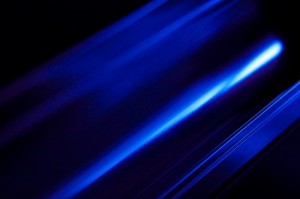Breaking the Universal Speed Limit
As we grow into this coming age, technology is allowing us the ability to feed the thrills of our imagination unlike ever before. Whether it’s watching automobiles rocket around a track at over two hundred miles an hour or observing a plane pierce through the sound barrier, many of us have an innate desire to push body, mind, and technology to their limits.
One such limit that scientists have been trying to crack for decades is the one set forth by one of the most brilliant minds of all time, Albert Einstein. Through his analysis and mathematical configurations, he concluded that the ultimate speed that could ever be attained was that of light traveling through a vacuum (such as the vacuum of space). His theory presented a barrier that through the laws of physics could never be broken…until now.
Light is one extraordinary entity, possessing the ability to be either a particle or a wave, depending on how it is viewed. Scientists at the National Institute of Standards and Technology (NIST) have developed a strategy to combine these two conflicting elements of light. By achieving this, they actually accelerated portions of a short luminal burst to a position ahead of where it normally would be if left to travel freely through a vacuum, unhindered by matter. This fascinating new procedure dubbed ‘four wave mixing’ resulted in a segment of ‘reformed’ light arriving around 50 nanoseconds ahead of the beam of its unaltered counterpart! The new method was essentially able to beat light in a race.
What does this all really mean? Could Einstein have been wrong in his calculations of the limits of physics? Are teleportation and space travel actually viable now? Scientists speculate that this new procedure will not only help to speed up the timing of our present communication systems, but provide a deeper insight into one of the most baffling and promising areas of science: quantum mechanics. At the quantum level (dealing with particles smaller than atoms) the laws of physics as we know them break down. Could this innovation help shed new light on this bold new area of science?
Although these tests seem to verify that the universal speed limit can indeed be broken, it will still be some time before we can beam humans to one side of the world in an instant, or travel to distant galaxies in days instead of lifetimes. Regardless of when we can harvest it, this breakthrough definitely holds the promise of unlocking new horizons for the next generation of adventurers and explorers to come.
Comments
Tags: four wave mixing, luminal burst, national institute of standards and technology, universal speed limit
Trackback from your site.


